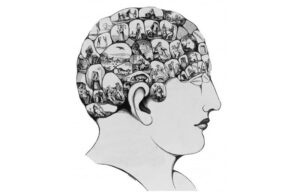 There is an increasing amount of scientific evidence that proves art enhances brain function. It has an impact on brain wave patterns and emotions, the nervous system, and can actually raise serotonin levels. Art can change a person’s outlook and the way they experience the world.
There is an increasing amount of scientific evidence that proves art enhances brain function. It has an impact on brain wave patterns and emotions, the nervous system, and can actually raise serotonin levels. Art can change a person’s outlook and the way they experience the world.
Decades of research have provided more than a sufficient amount of data to prove that arts education impacts everything from overall academic achievement to social and emotional development and so much more. Research has proven the arts develop neural systems that produce a broad spectrum of benefits ranging from fine motor skills to creativity and improved emotional balance. Quite simply, the arts are invaluable to our proper functioning individually and as a society.
This article was originally written in March 2015, and updated on May 27, 2016, June 2019, and September 2019.
“The arts are a critical component of healthcare. Expressive art is a tool to explore, develop and practice creativity as a means to wellness.” ~ Wellarts Association
Arts With The Brain in Mind
Evidence from brain research is only one of many reasons education and engagement in fine arts are beneficial to the educational process. As Eric Jensen, one of the leading translators in the world of neuroscience into education, states in his book Arts with the Brain in Mind, “The systems they nourish, which include our integrated sensory, attentional, cognitive, emotional, and motor capacities, are, in fact, the driving forces behind all other learning.”
This notion of how the arts and the brain work together is supported by another study, conducted by Judith Burton, professor of Art Education and Research, Teachers College, Columbia University, which reveals that subjects such as mathematics, science, and language require complex cognitive and creative capacities that are “typical of arts learning.”
Art Changes Consciousness
In his article on the Natural Blaze website, Jacob Devaney wrote “When you observe a profound piece of art you are potentially firing the same neurons as the artist did when they created it thus making new neural pathways and stimulating a state of inspiration. This sense of being drawn into a painting is called “embodied cognition”.
Education in the Arts is An Integral Part
And, according to Bob Bryant, Executive Director of Fine Arts at Katy, ISD (Katy, Independent School District (www.katyisd.org), in Houston, Texas, “Education in the arts is an integral part of the development of each human being. Education and engagement in the fine arts are an essential part of the school curriculum and an important component in the educational program of every student in Katy ISD.”
Increased Blood Flow to the Brain
In May 2011, Robert Mendick, a reporter for The Telegraph, wrote an article (https://www.telegraph.co.uk/culture/art) about an experiment conducted by Professor Semir Zeki, chair in neuroaesthetics at University College London. Zeki explained, “We wanted to see what happens in the brain when you look at beautiful paintings.” The experiment concluded when you look at art “whether it is a landscape, a still life, an abstract or a portrait – there is strong activity in that part of the brain related to pleasure.” The participants underwent brain scans while being shown a series of 30 paintings by major artists. When viewing art they considered most beautiful their blood flow increased in a certain part of the brain by as much as 10%, which is the equivalent to gazing at a loved one. Paintings by John Constable, Ingres, and Guido Reni produced the most powerful ‘pleasure’ response.
Awe, Wonder, and Beauty Promote Healing
Psychologist Dr. Dacher Keltner, of California University in Berkeley, said: “That awe, wonder, and beauty promote healthier levels of cytokines suggests the things we do to experience these emotions – a walk in nature, losing oneself in music, beholding art – has a direct influence upon health and life expectancy.” Source: Art does heal: scientists say appreciating creative works can fight off disease http://www.telegraph.co.uk
The experience of viewing awe-inspiring art has a positive effect o the physical body and mental state. In an article on the University of Wisconsin Health website, psychologist Shilagh Mirgain, Ph.D. was quoted as saying, “Awe has many important implications for our well-being.” Mirgain explained, “Experiencing awe can give us a sense of hope and provide a feeling of fulfillment.”
Many medical-related articles also provide evidence that points to the physical benefits derived from experiencing awe-inspiring moments on a routine basis. A recent study from the University of California-Berkeley found that “participants who experienced more awe-struck moments had the lowest levels of interleukin-6, a marker of inflammation.” Read Increase Your Well-Being With Awe-Inspiring Art.
Artists Are Healthier
The Research Center for Arts and Culture (RCAC) at the National Center for Creative Aging (NCCA) established that artists suffer less loneliness and depression than the general population. According to the study, mature artists are highly functioning members of society and are twice likely to do volunteer work as others. The study proved the benefits of the ART CART, a program that serves mature artists. The research also proved the general benefits of art-making and creative collaboration for the aging population.
Artists’ Statements in The Healing Power of ART Exhibition
Every year Manhattan Arts International presents The Healing Power of ART exhibition. We receive art and artists’ statements on a range of subjects and explain why artists create art. Some statements deal with physical and mental illness. One artist wrote: “Within the last ten years painting has been a continuous remedy for the depression and pain” While still another wrote: “I believe art saved my life, pulled me out of a coma…” Read Does Art Have The Power to Save Lives?
Art Reduces Stress
On the U.S. National Institute of Health’s (NIH) website, according to the extensive research publication “The Connection Between Art, Healing, and Public Health: A Review of Current Literature” by Heather L. Stuckey, DEd and Jeremy Nobel, MD, “Engagement with creative activities has the potential to contribute toward reducing stress and depression and can serve as a vehicle for alleviating the burden of chronic disease.” They also stated, “Through creativity and imagination, we find our identity and our reservoir of healing. The more we understand the relationship between creative expression and healing, the more we will discover the healing power of the arts.”
Art and Brain Functions
A new report from the National Endowment for the Arts (NEA) is titled “How Creativity Works in the Brain”. This report comes after previous NEA initiatives including the NEA/Walter Reed Healing Arts Partnership. Like Bill O’Brien, NEA senior advisor to the chairman for innovation stated, “The time is ripe for bringing together artists, scientists, and educators to collaboratively confront the question of how creativity functions in the brain.” He went on say, “Imagine the potential for our nation’s health, education, culture, and productivity if we were able to truly understand the anatomy of our ‘aha’ moments, and how they can be nurtured, optimized, and deployed.”
Da Vinci’s Brain
“Leonardo da Vinci, the Codex Leicester, and the Creative Mind,” was an exhibition at the Minneapolis Institute of Arts’ Target Galleries, offered rare insights into one of history’s greatest renaissance thinkers. It also revealed how his innovative mental processes are shared by some of today’s most visionary artists, engineers, and designers. By bringing together da Vinci’s observations with contemporary works by artists and designers the exhibition explored how the creative process unfolds.
Source: https://www.healing-power-of-art.org/art-and-the-brain/
 Businesses that collect art and maintain a corporate art collection can improve their corporate culture, add a new dimension to their corporate social responsibility outreach, and significantly enhance their brand image.
Businesses that collect art and maintain a corporate art collection can improve their corporate culture, add a new dimension to their corporate social responsibility outreach, and significantly enhance their brand image.

 There is an increasing amount of scientific evidence that proves art enhances brain function. It has an impact on brain wave patterns and emotions, the nervous system, and can actually raise serotonin levels. Art can change a person’s outlook and the way they experience the world.
There is an increasing amount of scientific evidence that proves art enhances brain function. It has an impact on brain wave patterns and emotions, the nervous system, and can actually raise serotonin levels. Art can change a person’s outlook and the way they experience the world.